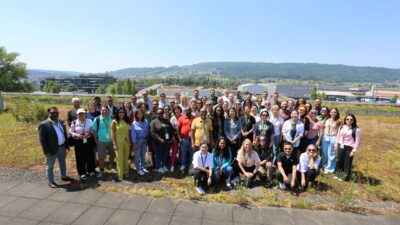Council Unveils New Regional Water Supply Prioritization
The Bay Area Council today (May 5) released a first-of-its-kind prioritization of regional water infrastructure projects that, if completed, could produce up to 250,000 acre-feet of new water each year, enough to serve or offset the use of an estimated 3.6 million new Bay Area residents, or approximately 1.25 million new Bay Area households.[1] The Bay Area’s 11 major water agencies project an estimated 2 million additional residents by 2035.[2]
The Regional Water Project Prioritization identifies 23 water supply projects around the Bay Area that would bring an additional 250,000 acre-feet of new water supply to the region. An acre-foot of water is enough to serve the annual water needs of about five Bay Area households.
The Bay Area Council worked with the region’s 11 major water agencies over the past six months to create the ranking as part of a larger process to prepare the Bay Area for climate change and prioritize how the region pursues limited state and federal funding to pay for water infrastructure projects.
“If everything’s a priority, nothing’s a priority” said Jim Wunderman, President and CEO of the Bay Area Council. “The region needs to focus on using our limited resources to create new water, maximize the water we currently have, and protect vital bay infrastructure. The mercury is rising, so too are sea levels and the cost of inaction. We hope these projects will help kick-start a regional conversation about how we prioritize and fund our future water needs.”
The projects include 18 water recycling production-and-conveyance projects; three brackish desalination facilities; two reservoir expansions; and a state-of-the-art storm forecasting system. In total, the water supply projects would cost $2.37 billion.
“The rain doesn’t stop at water agency jurisdictions” said Jerry Brown, General Manager of the Contra Costa Water Agency. “That’s why the Bay Area’s water agencies are looking to regional planning efforts like this to prepare the region for climate change and to improve our drought resiliency. I applaud the Bay Area Council for helping launch that discussion.”
The prioritization also includes four flood protection projects totaling $1.23 billion to defend critical bayside infrastructure from sea level rise and extreme-weather-related flooding. According to the Bay Area Council Economic Institute’s 2015 report, Surviving the Storm, a 150-year storm event could cost the entire region greater than $10 billion in economic damages, about the same as the Loma Prieta Earthquake. Flooding would be most acute in Santa Clara County, where major water and wastewater facilities are located along the bay shoreline. At SFO, flight delays and cancellations would result an estimated $164 million in lost economic productivity.
Approximately 66 percent of the Bay Area’s freshwater originates as Sierra Nevada snowpack, which the California Department of Water Resources estimates will decline by at least 25 percent by 2050.[3] However, the Bay Area’s 11 major water agencies project an additional 2 million residents by 2035.
The Council’s priorities are being announced as Bay Area water agencies begin the development of the Bay Area Regional Reliability Drought Contingency Plan (the BARR DC Plan). The BARR DC Plan is a joint effort by eight Bay Area water agencies collectively serving more than 6 million people in seven counties, and bringing a regional approach to enhancing water supply reliability, leveraging existing infrastructure investments, facilitating water transfers during critical shortages, and improving climate change resiliency. The BARR DC Plan is funded by a grant from the U.S. Bureau of Reclamation and will culminate in a report to be finalized in early 2017.
[1] Calculated from State Water Resources Control Board estimate of per-capita Bay Area water use between March 2014-2015, and ABAG regional population estimate (7 million). Assumes 2.87 individuals per household (Source: Department of Water Resources. “California Single Family Water Use Efficiency Study”, June, 2011. Table 96, pg. 251).
[2] 2013 Bay Area Integrated Regional Water Management Plan, Figure 2-18
[3] State of California. Department of Water Resources. Climate Change Impacts on California’s Water. Fall 2008.





